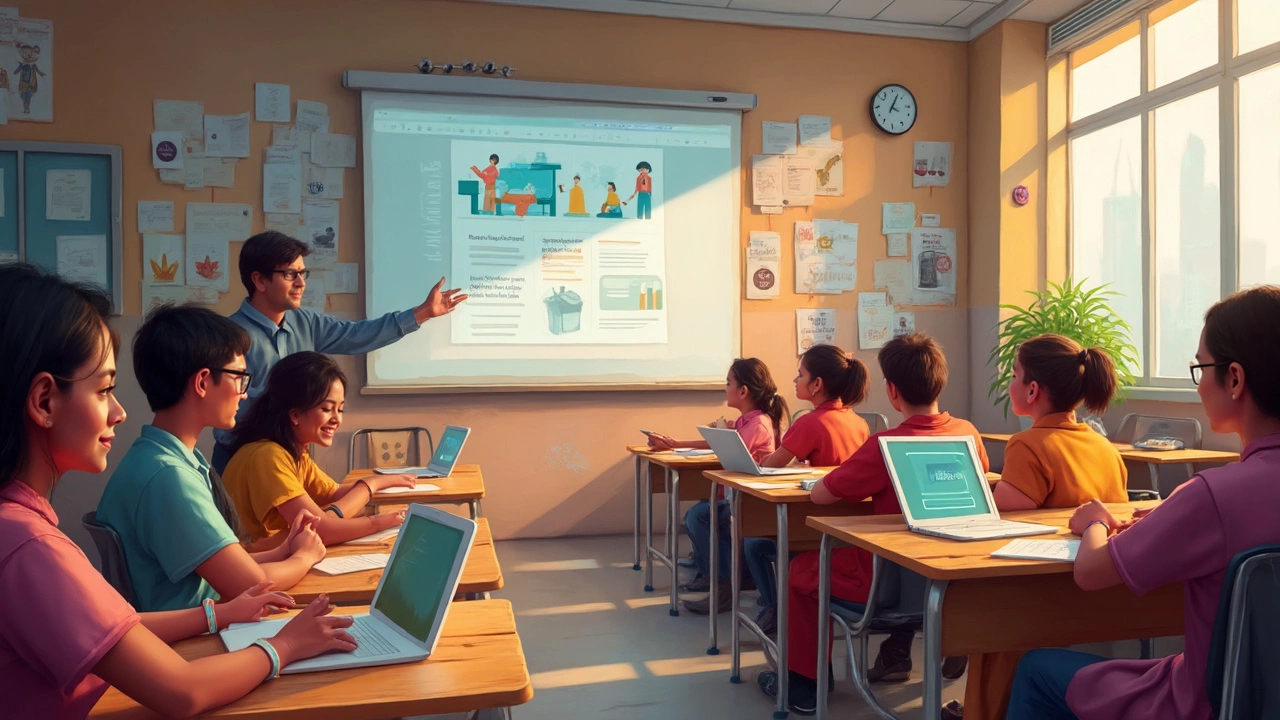Google Classroom: A Practical Guide for Teachers and Students
Google Classroom has become a go‑to hub for many schools and colleges. If you’re wondering how to set it up, keep students engaged, or compare it with other tools, you’re in the right place. Below you’ll find clear steps, handy tricks, and a quick look at what makes it tick.
Getting Started in Just a Few Minutes
First, you need a Google account. Once you’re signed in, click the ‘+’ button and pick *Create class*. Give your class a name, an optional section, and a room number if you want. That’s it—Google Classroom creates a clean dashboard where you can post announcements, assignments, and resources.
Students join by entering the class code you share. The code is a short string of letters and numbers, and it works on any device—phone, tablet, or laptop. No extra software is required, which means less tech trouble for everyone.
Key Features That Save Time
Assignments: Create a new assignment, attach a Google Doc, PDF, or link, set a due date, and hit *Assign*. Students see the task instantly and can submit their work right in the platform.
Stream: Think of this as a class newsfeed. Post announcements, share videos, or ask quick questions. It’s a fast way to keep everyone in the loop without flooding inboxes.
Grades: When a student turns in an assignment, you can grade it with comments, points, or a rubric. Grades sync with Google Sheets, so you can export a clean spreadsheet for reporting.
Integrations: Google Classroom works smoothly with Google Meet for live lessons, Google Forms for quizzes, and third‑party apps like Canva or Quizizz. You can add these tools directly from the *Classwork* tab.
All these features are designed to cut down on paperwork and make it easier to track progress. If you’re a teacher who still uses paper handouts, switching to digital assignments can shave hours off your weekly workload.
Tips to Keep Students Engaged
Use the *Question* post type to spark discussion. Set a short deadline so students respond quickly, then highlight the best answers in the stream. It creates a buzz and encourages participation.
Mix media. Instead of a plain text assignment, attach a short video from YouTube or a slide deck. Visuals keep learners focused and make complex topics easier to digest.
Give clear rubrics. When students see exactly how they’ll be graded, they spend less time guessing and more time improving. Rubrics can be added when you create an assignment—just click *Add rubric* and fill in the criteria.
Finally, set up regular feedback loops. Use Google Forms to ask students what’s working and what isn’t. The data feeds straight into your Classroom, so you can tweak your approach on the fly.
Google Classroom vs. Other Platforms
Compared to platforms like Microsoft Teams or Moodle, Google Classroom shines in simplicity. You don’t need a heavy LMS setup; everything lives in the familiar Google ecosystem. That means less training and faster adoption.
However, if you need deep analytics or custom branding, a full‑featured LMS might be a better fit. For most K‑12 and undergraduate classes, Google Classroom offers enough power without the overhead.
Bottom line: Google Classroom is a fast, free, and flexible way to run a modern classroom. Whether you’re teaching a single subject or managing an entire department, the tools inside help you stay organized, keep students engaged, and track results with minimal hassle.
Ready to give it a try? Create your first class today, invite a few students, and experiment with one of the features above. You’ll see how quickly the platform can transform your teaching routine.
- July
18
2025 - 5
Most Used Online Class Platforms: Which E-Learning Platform Leads in 2025?
Curious about the top platform for online classes in 2025? Dive into real usage stats, unique features, and tips for choosing the best e-learning tool for any goal.
Read More- June
10
2025 - 5
Is Google an E-Learning Platform? Unpacking the Facts
People often lump Google in with e-learning platforms, but does it actually fit that label? This article breaks down what makes a true e-learning platform and explores how Google tools stack up. You’ll find out what Google offers for education, where it falls short, and practical tips on how to make the most of its learning features. Get ready to see Google’s role in digital education from a new angle.
Read More- March
15
2025 - 5
Why Can't You Leave Google Classrooms Anymore?
Google Classroom has become an indispensable part of online education, but leaving a class has become increasingly difficult due to features designed for academic stability. This article explores the reasons behind this change and offers tips for navigating the platform effectively. Understand the value of Google Classroom's fixed membership and discover how it influences the learning experience. Find out how to manage your classes without feeling trapped.
Read More

